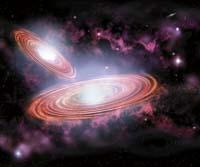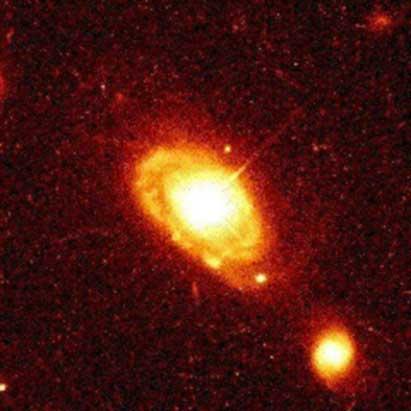Two black holes dancing
2009/05/01 Elhuyar Zientzia Iturria: Elhuyar aldizkaria

Researchers at the Arizona National Optical Astronomy Observatory have first discovered a system of two massive black holes. They had to analyze the images and data of the 17,500 quasars collected by a New Mexico telescope.
Astronomers have long known massive black holes alone; they consider each galaxy to have a black hole. They also know that there are galaxies that interact, that pass together, that sometimes collide and that never unite. What about black holes when joining two galaxies? The theory predicts that black holes will revolve around each other and eventually unite. But astronomers have not seen it so far.
To detect black holes are based on the light emitted by materials that attract and "swallow" black holes. This light brings a lot of information to astronomers, allowing them to know at what speed and direction the black holes they study are moving. In Quasar they seek that distinctive light. Quasars are the brightest bodies known to astronomers, which emit light and other electromagnetic radiation. Astronomers don't know where all that radiation comes from, but they have seen that sometimes, at least, the black hole is emitted by a matter being swallowed.
Well, two jets of radiation close to each other have been detected in the quasars they were studying and they have come to the conclusion that they are jets that come out of a system of two black holes. In fact, they claim that between these two massive black holes there is a third of the light and that they are orbiting at 6,000 km/s.

Gai honi buruzko eduki gehiago
Elhuyarrek garatutako teknologia




